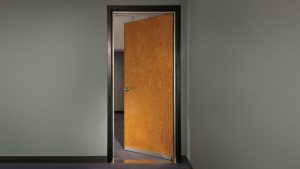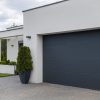Everyone Seems To Agree…
On the importance of treating the First Reflection Points (but – with what?)
Acoustics, like other human endeavors, generates opinions by the roomful. It’s normal and expected; there are also rare instances of opinions becoming facts via scientific research, and the concept of the “First-Reflection Points” (FRPs) appears to be headed for wider acceptance. A LOT of acoustic designers and consultants have weighed in, and the importance of “treating” a room’s FRPs seems to be one of the opinions on which they agree.
A bit of background: In recording studio control rooms and audiophile listening rooms, the convention of a pair of speakers – stereo – still rules. Very few musical artists are releasing material mixed and formatted exclusively for surround listening, and if there is a surround release, it’s an afterthought, a marketing add-on. Over time, the quest for the best stereo speaker placement in the control room or listening room became paramount. And now, treating the “first reflections” off the side walls adjacent to those stereo speakers is also on a fast-track to serious consideration. First reflections arrive at the listener’s ears before any other flat-surface reflections, they are the strongest reflections, and as such, they cause the most destructive interference to the directly-radiated sound from the speakers at the listener’s ears.

In the illustration, red lines represent sound radiating directly from the speakers to the listeners’ ears. The green lines show the first reflection points on the side walls between the speakers and the green person’s ears, the blue lines show first reflection points for the blue person. First Reflection Points may vary by listening position.
While surfaces other than side walls can generate first reflections, for example when walls are farther from the listener than the ceiling surface, we generally see the side walls as the first offender. And we usually disregard the floor, which is most often the actual first reflector – very few people want to “treat” their floors for first reflections (carpets simply dull the higher frequencies without affecting problematic midrange reflections). And for recording studios with consoles and near-field monitors, the console becomes the ‘first’ first reflection. But you can’t effectively treat the console, either.
So we seem to have an informal acoustics consensus that the side-wall First Reflection Points should be treated first in order to start reducing the damage done by flat-surface sound bounces. In fact, some studio and audiophile consultants have made it their mantra (and probably tried trademarking it).
But now we arrive at a major point of difference: WHAT should we use to “treat” – i.e. reduce the effect of – first reflections? For that matter, ALL flat-surface reflections? Most studio and audiophile consultants specify sound-absorbing material at the FRPs and elsewhere in the room (as do most acoustic products companies). There are mountains of fabric-wrapped compressed fiberglass panels on walls (and ceilings) around the world, as well as their cheaper, less-effective cousins, “studio foam” panels. Our Acoustic Geometry big-point-of-difference is this: instead of absorber panels at First Reflection Points, we strongly recommend placing phase-coherent sound diffusors, like our uniquely-designed Curve Diffusors, at those FRPs.
Both types of treatments – absorbers and diffusors – will lessen the destructive interference from flat-surface reflections re-combining with direct sound waves. Absorbers do that by turning sound energy into heat inside fiberglass (or cotton, rock wool, or other absorptive material); diffusors do that by spreading out the sound waves into wider, diffused reflections, which also lessens destructive interference because the energy is widely-spread, and is therefore diminished at any listening position.

Diffusion (Left) and Absorption (Right) Reduce Flat-Wall Reflection Effects
However, absorber treatments reduce the “live-ness”, or ambience, of a room, and if over-used, render rooms dead-sounding and un-natural. Ancestrally, humans have not experienced overly-absorbent rooms, which interfere with our instinct to accurately and continuously assess our environment – also, sound localization is an important survival tool. Diffusion treatments simply spread the sound energy without removing ambience, and if the diffusors are phase-coherent – i.e. timing relationships are not distorted – our hearing can accurately locate sounds and our sense of well-being is maintained (watch our video “Your Brain On Sound” for an overview of this).
Acoustic Geometry recommends treating your rooms with a balance of absorption and diffusion, and to use Curve Diffusors at the First-Reflection Points – and also on other key flat surfaces, like front and rear walls, and ceilings. Curves at the First Reflection Points will make the room feel sonically larger, widen the “sweet-spot”, and deepen the stereo soundstage. A balance of both treatments maintains a natural live-ness while reducing overall reflected sound energy in the room. Try it – ‘balancing treatments’ may become your new acoustic standard.















